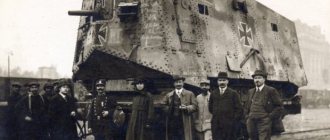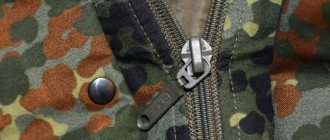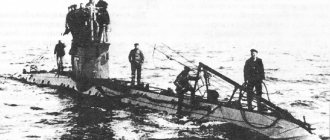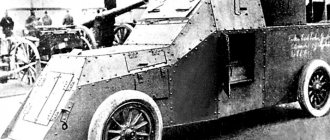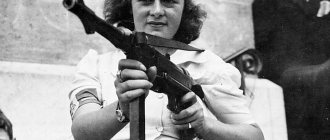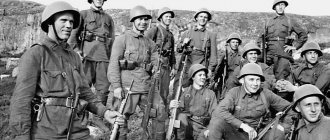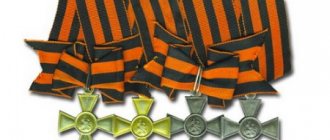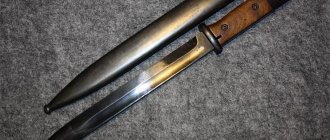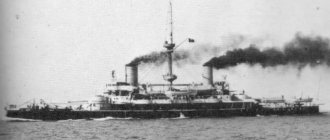This material provides general information about the insignia of privates, non-commissioned officers and officers of regular units of the German army.
The uniforms and insignia of officer candidates - Fahnejunkers and Fenrichs - are not considered here and are described in a separate material.
Unlike the uniform, the system of insignia for lower ranks and non-commissioned officers of the Second Reich army was quite complex and unique in its own way, significantly different from other European armies. Thus, the shoulder straps of privates and non-commissioned officers were absolutely identical and did not carry any information about the rank of the serviceman. The rank was determined in accordance with the elements of the collar and cuffs of the jacket, the type of personal edged weapon and the sleeve chevrons.
Only the system of insignia for officers was generally accepted.
| Category | Ranks | |||||
| Line infantry (Infanterie) | Jaegers, light infantry (Jäger) | Foot artillery (Fußartillerie) | Field artillery (Feldartillerie) | Cavalry | Horse huntsmen (Jäger zu Pferde) | |
| Lower ranks (Mannschaften, Gemeine) | Musketier, Grenadier, Füsilier, Garde-Füsilier, Schütze, Guardsman, Grenadier, Infanterist, Soldat, Eisenbahner, Telegraph Operator (Telegraphist), signalman (Funker), aeronaut (Luftschiffer), aviator / pilot (Flieger), pioneer (Pionier), guard-pioneer (Garde-Pionier), sled driver (Fahrer), driver (Kraftfahrer), transporter (Trainsoldat, Traingemeiner , Gemeiner), military baker (Militär-Bäcker), military (company) medic (Sanitätssoldat), transport orderly (Krankenträger), hospital orderly (Militärkrankenwärter) | Jäger, Garde-Jäger | Gunner (Kanonier), Garde-Canonier (Garde-Kanonier) | Gunner (Kanonier), guard gunner (Garde-Kanonier), in horse artillery - horse artilleryman (Reitende Artillerist, Fahrende Artillerist) | Hussar, Ulan, Dragoon, Cuirassier, Garde-du-Corps, Schwerer Reiter, Karabinier, Grenadier zu Pferde), Chevauleger, Gardereiter, Guardsman (Gardist) | Jäger zu Pferde |
| Gefreite | Gefreiter | Gefreiter | Gefreiter | Gefreiter | Gefreiter | Gefreiter |
| Obergefreiter | ||||||
| Non-commissioned officers without a belt (Unteroffiziere ohne Portpee) | Unteroffizier | Ober-Jäger (Oberjäger, Ober-Jäger) | Unteroffizier | Unteroffizier | Unteroffizier | Ober-Jäger zu Pferde (Ober-Jäger zu Pferde, Oberjäger zu Pferde) |
| Sergeant | Sergeant | Sergeant | Sergeant | Sergeant | Sergeant | |
| Non-commissioned officers with a sword belt (Unteroffiziere mit Portpee) | Vice-feldwebel | Vice-feldwebel | Vice-feldwebel | Vice-feldwebel (Vizefeldwebel), in horse artillery – Vice-Wachtmeister (Vize-Wachtmeister) | Vice-Wachtmeister | Vice-Wachtmeister |
| Feldwebel | Feldwebel | Feldwebel | Feldwebel, in horse artillery - Wachtmeister | Wachtmeister | Wachtmeister | |
| Officerstellvertreter | Officerstellvertreter | Officerstellvertreter | Officerstellvertreter | Officerstellvertreter | Officerstellvertreter | |
| Feldwebelleutnante | Feldwebelleutnant | Feldwebelleutnant | Feldwebelleutnant | Feldwebelleutnant | Feldwebelleutnant | Feldwebelleutnant |
| Subaltern officers (Subalternoffiziere) | Leutnant | Leutnant | Leutnant | Leutnant | Leutnant | Leutnant |
| Oberleutnant | Oberleutnant | Oberleutnant | Oberleutnant | Oberleutnant | Oberleutnant | |
| Hauptleute und Rittmeister | Hauptmann, in the transport units - Rittmeister | Hauptmann | Hauptmann | Hauptmann, in horse artillery - Rittmeister | Rittmeister | Rittmeister |
| Staff officers (Stabsoffiziere) | Major | Major | Major | Major | Major | Major |
| Oberstleutnant | Oberstleutnant | Oberstleutnant | Oberstleutnant | Oberstleutnant | Oberstleutnant | |
| Oberst | Oberst | Oberst | Oberst | Oberst | Oberst | |
| Generals | Generalmajor | Generalmajor | Generalmajor | Generalmajor | Generalmajor | |
| Generalleutnant | Generalleutnant | Generalleutnant | Generalleutnant | |||
| General der Infanterie | General der Artillerie | General der Artillerie | General der Kavallerie | |||
| Generaloberst | General Feldzeugmeister | |||||
| Generaloberst with the rank of field marshal (Generaloberst mit dem Range eines Feldmarschalls) | ||||||
| Generalfeldmarschall | ||||||
I. Lower ranks (Gemeine)
In the German army there was no single concept of “private”. The lower ranks of the lowest rank, in other words ordinary soldiers, were named according to military specialization depending on the type of troops or regimental affiliation. Moreover, even within infantry and cavalry units there were also fundamental differences.
Let us consider the system of ranks of lower ranks in more detail.
Infantry. Musketier; fusilier (Füsilier); guard-fusilier (Garde-Füsilier), grenadier (Greandier); guardsman (also Grenadier); Schutze, i.e. shooter (Schütze), infantryman, i.e. infantryman (Infanterist - in the Bavarian infantry), soldier (Soldat - in the Saxon infantry).
Jaegers (light infantry). Jäger; Garde-Jäger.
Cavalry. Hussar; dragoon (Dragoner); Ulan; cuirassier (Kürassier); Chevauleger; Jäger zu pferde, i.e. horse huntsman (Jäger zu Pferde); Schwerer Reiter, i.e. heavy cavalryman (Schwerer Reiter); Garde-du-Corps; carabinier (Karabinier - in the Saxon carabinieri regiments); grenadier zu pferde, i.e. horse grenadier (Grenadier zu Pferde); Gardereiter (gardewriter); guardsman (Gardist).
Artillery. Kanonier; Garde-Kanonier; horse artilleryman (Reitende Artillerist or Fahrende Artillerist). The latter ranks belonged to the field artillery, although they were subordinate to the command of the cavalry divisions.
Ranks according to military specialization. Pionier; Garde-Pionier; railway worker (Eisenbahner); telegraphist; signalman (Funker); aeronaut, i.e. airship crew member (Luftschiffer); aviator or pilot (Flieger); riding (Fahrer); driver (Kraftfahrer); oboznik (Trainsoldat, Traingemeiner or Gemeiner); military baker (Militär-Bäcker); company, squadron or battery medic (Sanitätssoldat); a transport orderly, a wartime employee of a sanitary company (Krankenträger); hospital orderly (Militärkrankenwärter).
In reserve and reserve units, the lower ranks were called reservist (Reservist) and ersatz-reservist (Ersatz-Reservist).
In the Landsturm (land militia) units, the lower ranks were called Landsturmmann, Landsturmrekrut, Landsturmpflichtiger and Armierungs-Soldat.
The lower ranks of the German infantry wore pentagonal (in some cases quadrangular with smoothed edges) shoulder straps of various colors depending on the corps. The field of shoulder straps could be “clean” (for example, in guards units), or with unit encryption. The embroidered monogram of the honorary chief of the unit was used as encryption; embroidered regiment or battalion number in Arabic numerals; embroidered letter; embroidered letter with the number of units; emblem. The appearance of shoulder straps for lower ranks of other military branches is shown in the table.
German uniform VS uniform of a Red Army soldier
Tunic, model 1935. Raspberry colored buttonholes with black edging and shooter's emblems were sewn here. And bloomers.
The Ssh 40 helmet was made in Lysva. We can be proud of our region; Lysva helmets have saved a lot of lives.”
Compared to the German raincoat, ours is much heavier. The mass became even greater when the tarpaulin became wet. Gas mask bag with gas mask. When everyone realized that the gas would not be used, the gas masks were thrown away. The bag was used for other purposes. A cracker or food bag, it contained a pot and rations. Winter hat. Tent backpack.
“The uniform of a Red Army soldier was much warmer than the uniform of the Germans,” Yuri clarifies. “Our soldiers wore cowhide boots on their feet. Boots with windings were more often used. Cup, mug, spoon, fork - everything is the same as it is now, practically nothing has changed. Grenade pouch, shovel, ammo pouches, canvas belt and unloading.”
This year, the Perm military-historical club “Eastern Frontier”, in which Yuri Girev is involved, went to Borodino for reconstruction. The guys defended Moscow once again. The reconstruction was dedicated to October 1941. When our army on the Borodino field again defended its Motherland. Six people went from Perm to this reconstruction. The club has historical reconstruction groups engaged in the reconstruction of army units of different eras: 1.) 4th Jaeger Regiment. Russia. 1812 2.) 194th Troitsko-Sergievsky Infantry Regiment. Russia, 1910–1917 3.) 601st motorized rifle regiment of the 82nd (3rd Guards) motorized rifle division. THE USSR. 1941–1942 4.) 1st Infantry Division. Germany. 1941–1945 In addition to the above, club members restore and care for the graves of Russian Army officers who fell in the First World War, and conduct active museum, publishing, search and educational work.
Of course, remodeling is an expensive and time-consuming hobby. The boys grow up and continue to play war. Not just playing, but trying to immerse yourself in the atmosphere and mood of that time. The most important thing is that people do not forget what happened in 1941. And, in particular, reconstructions allow us to remember again and again how it was in all the details. There is no need to say too much about the benefits of the activities of military search engines. The guys carry out search work for their own money, knock together coffins and bury the remains of soldiers. Read more about the activities of search engines here.
II. Gefreite
The rank of Gefreiter was the only one that could be awarded to a lower rank during active service. Gefreiter served as acting squad commander in his absence.
On both sides of the collar of the uniform and jacket, one button with a diameter of 25 mm (±0.5 mm) with the coat of arms of the corresponding German state (Wappen Knopf) was sewn. The Kingdom of Prussia, the Kingdom of Bavaria, the Kingdom of Saxony, the Kingdom of Württemberg, the Grand Duchy of Hesse, the Grand Duchy of Mecklenburg-Schwerin and the Grand Duchy of Mecklenburg-Strelitz had their own heraldic buttons. Until 1866, the Grand Duchy of Baden (eagle with shield) also used its own buttons.
All other states that were part of the German Empire used buttons with the coat of arms of Prussia.
The color of the buttons matched the instrument metal assigned to the unit. Accordingly, “Gefreiter buttons” could be gold or silver.
Buttons were not sewn on the collars of overcoats.
“Gefreiter buttons” should not be confused with uniform buttons, the size of which on peacetime uniforms was 24 mm.
In 1893-1894. The rank of gefreiter on blue Lithuanian jackets of the 1893 model (Litewka M1893) with a stand-up collar was indicated by a fabric chevron of “land” colors, sewn on the upper part of the left sleeve.
On the white drill jacket (Drillichrock), the gefreiter was distinguished by an “earth” colored cord sewn along the lower edge of the collar. In the Kingdom of Prussia the cord was black, in the Kingdom of Bavaria it was blue, in the Kingdom of Saxony it was green, in the Kingdom of Württemberg it was red and black, in the Grand Duchy of Hesse, in the Grand Duchies of Mecklenburg-Schwerin and Mecklenburg-Strelitz it was red.
The rank of Ober-Gefreiter was introduced exclusively in the foot artillery regiments (Fußartillerie) in 1859. On both sides of the collar of the Ober-Gefreiter's uniform, one button with a diameter of 29 mm was sewn with the coat of arms of the corresponding state. The second characteristic difference was the non-commissioned officer's lanyard.
Naval ranks and ratings
In the Imperial German Navy, the Russian system of ranks and ratings combined the Prussian system with the navies of other northern states.
Flag officers
| Admiral ranks | |||||
| title | Großadmiral | Admiral | Vizeadmiral | Rear Admiral | |
| Epaulet[9] | |||||
| Lace sleeves | |||||
| Team flag | |||||
| English designation | Grand Admiral | Admiral | Vice Admiral | Rear Admiral | |
Naval officers
| Line officers | |||||||
| title | Kapitän zur See | Fregattenkapitän | Korvettenkapitän | Kapitänleutnant | Oberleutnant zur See | Leutnant zur See | Deckoffizier-Leutnant |
| Epaulet[9] | |||||||
| Lace sleeves | |||||||
| English designation | Captain at sea | Frigate Captain | Corvette Captain | Captain Lieutenant | Senior lieutenant at sea | Lieutenant at sea | Watch lieutenant (since 1916) |
Officer Cadets
| Officer training ranks | |||||||
| title | Oberfähnrich zur See | Fahnrich zur See | Seekadett | ||||
| Epaulet[9] | |||||||
| Sleeve | |||||||
| English designation | Midshipman | Sea Cadet | Junior naval cadet | ||||
Ensigns
| Ensigns | |||
| title | Deckoffiziere as Offizier-Stellvertreter | Oberdeckoffizier | Deckoffizier |
| Shoulder[9] | |||
| English designation | Chief Warrant Officer as an acting officer. | Chief Warrant Officer | Midshipman |
| Specialty designations | Offizier-Stellvertreter | Oberbotsmann Obersteuermann Oberfirewerker | Bootsmann Steuermann Feuerwerker |
| English designation | Acting officer | Chief Boatswain Chief Mate Chief Feuerwerker | Bosun Buddy Feuerwerker |
Petty Officers
| Senior Petty Officers | Junior petty officers | |||
| title | Sergeant Major | Wiese-Sergeant-Major | Obermaat | Maat |
| Sleeve[9] | ||||
| English designation | Petty Officer 1st Class (with additional stripe around sleeve) | Chief Petty Officer | Petty Officer 1st Class | Sergeant Major |
Sailors
| Sailors | |||
| title | Obermatrosa | Einjährig-Freiwilliger | Matrose |
| Sleeve[9] | |||
| English designation | Seaman 1st class | Volunteer Sailor (i.e.: Reserve Officer Candidate) | Sailor |
III. Non-commissioned officers without a belt (Unteroffiziere ohne Portpee)
This junior category of non-commissioned officers included non-commissioned officers and sergeants themselves.
The common insignia of non-commissioned officers without a belt were the following.
1. Galoon 16 mm wide, gold or silver, depending on the instrument metal assigned to the department. The surface of the braid could be smooth or have a patterned weave, depending on the regimental affiliation. The galloon was sewn onto the front and upper edges of the collar of the “peacetime” (Waffenrock) uniform, as well as onto the upper edge of the cuffs. On a field jacket of the 1907/1910 model. (Feldrock M1907/10) braid was sewn to the front and bottom edge of the turn-down collar and to the cuffs of the sleeves.
2. Wide woven vertical patch on the colored flaps of the overcoat collar. The size of the valves was 5x8 cm, and their color depended on the type of troops: red (infantry), green (jaegers), black (infantry and engineering units - Ingenieur und Pionierkorps), gray (all Saxon units since 1908). On the overcoats of the 1915 model, in order to save material, the colored flaps were no longer present, and the vertical patch was sewn directly to the collar of the overcoat.
The coloring of the mentioned vertical patch, in turn, depended on the nationality of the unit. So, in the Kingdom of Prussia the patch was white with a central black stripe, in the Kingdom of Bavaria - white with blue, in the Kingdom of Saxony - white with green, in the Kingdom of Württemberg - red and black with a red and black stripe, in the Grand Duchy of Hesse - white with red, in the Grand Duchy of Mecklenburg-Schwerin - white with a blue-yellow-red stripe, in the Grand Duchy of Mecklenburg-Strelitz - yellow with a blue-red stripe. All other states that were part of the German Empire followed the Prussian model.
3. Non-commissioned officer's lanyard on a bayonet. Unlike the lanyards of the lower ranks, which differed in the colors of the parts in accordance with the numbers of companies, batteries and squadrons, the color of non-commissioned officers was determined by the state colors of the corresponding German states.
4. Cap with a visor, but with the cockade of the lower ranks. The same statutory cap of the lower ranks did not formally have a visor, however, soldiers and gefreiters purchased more presentable models with a visor at their own expense for going out into the city.
Unteroffizier
The uniform of non-commissioned officers is fully described above - this is a braid on the collar and cuffs, a patch on the flap of the overcoat collar, a non-commissioned officer's lanyard and a cap with a visor.
In 1893-1894. The rank of non-commissioned officer on Lithuanian shirts of the 1893 model (Litewka M1893) was indicated by a fabric non-commissioned officer's braid, sewn on the upper part of the left sleeve. In 1894, the system of insignia was unified, and the rank began to be indicated by a braid on the Lithuanian collar.
A white braid with a central stripe of an “earth” color was sewn onto the collar of a white drill jacket (Drillichrock). In the Kingdom of Prussia the stripe was black, in the Kingdom of Bavaria - blue, in the Kingdom of Saxony - green, in the Kingdom of Württemberg - red-black, in the Grand Duchy of Hesse - red, in the Grand Duchy of Mecklenburg-Schwerin - blue-yellow-red, in the Grand Duchy of Mecklenburg-Strelitz - blue-red colors.
In the Jaeger units (light infantry), the rank of non-commissioned officer was called “Ober-Jäger” (Oberjäger or Ober-Jäger), and in the mounted Jaeger units – “Ober-Jäger zu Pferde” (Ober-Jäger zu Pferde or Oberjäger zu Pferde).
Sergeant
The rank of “sergeant” was introduced in the Prussian army in 1843 for non-commissioned officers who were discharged but then returned to service. In the Second Reich, this rank became the second junior for non-commissioned officers of the armies of all states that were part of the German Empire.
The uniform of the sergeants was completely identical to the uniform of the non-commissioned officers, but with the only difference: on both sides of the collar of the uniform and jacket, one button with a diameter of 29 mm (±1.5 mm) with the coat of arms of the corresponding German state was sewn.
The Kingdom of Prussia, the Kingdom of Bavaria, the Kingdom of Saxony, the Kingdom of Württemberg, the Grand Duchy of Hesse, the Grand Duchy of Mecklenburg-Schwerin and the Grand Duchy of Mecklenburg-Strelitz had their own heraldic buttons. Until 1866, the Grand Duchy of Baden (eagle with shield) also used its own buttons.
All other states that were part of the German Empire used buttons with the coat of arms of Prussia.
In 1893-1894. The rank of sergeant on Lithuanian uniforms of the 1893 model (Litewka M1893) was indicated by two stripes in the upper part of the left sleeve: a non-commissioned officer's fabric braid, above which a Gefreiter fabric chevron in “land” colors was sewn. In 1894, the system of insignia was unified, and the rank began to be indicated by braid and heraldic buttons on the collar of the Lithuanian.
A white braid with a central stripe of an “earth” color was sewn onto the collar of a white drill jacket (Drillichrock).
German soldier of the First World War
The new German army consisted of contingents from 26 states: 4 kingdoms, 5 grand duchies, 12 principalities and duchies, 3 free cities and Alsace-Lorraine. The armies of Saxony and Württemberg had their own military ministries, general staffs, inspectorates and other structures. Even the armies of the grand duchies of Hesse and Mecklenburg retained some autonomy, although they came under the auspices of Prussia. The second largest military contingent for the army of a united Germany was provided by Bavaria. The three Bavarian army corps operated autonomously.
A large Bavarian general staff and the Ministry of War were located in Munich, with powerful inspectorates, officer academies and non-commissioned officer schools created on the Prussian model. Officers of the Saxon and Bavarian armies were promoted on separate lists, while Prussian and Württemberg officers could replace each other. In the period from 1880 to 1914. The brilliantly organized General Staff by Moltke managed to transform the motley army of the united Empire into an effective military machine, well trained and prepared for the conditions of modern war.
Rommel?
In August 1914, the mobilized German army had the following units: 5 regiments of Prussian Foot Guards. 5 regiments of Prussian Guards Grenadiers. 1st regiment of Prussian Guards Fusiliers. 12 line grenadier regiments. 170 infantry and fusilier line regiments. 24 Bavarian infantry regiments, incl. one life regiment. 18 Jaeger and rifle battalions, including the Prussian Guards rifle battalion. 2 Prussian Guards machine gun divisions. 9 linear machine gun divisions, incl. one Saxon and one Bavarian division. 15 fortress machine gun divisions.
Colonial infantry.
10 cuirassier regiments, incl. the Prussian Guards Regiment and the Prussian Gare du Cor regiment. 2 Saxon cavalry regiments, incl. one guards regiment. 2 Bavarian heavy cavalry regiments. 28 dragoon regiments, including two Prussian guard regiments. 8 Bavarian Chevoler regiments. 21st Hussar Regiment, incl. Prussian Life Guards Regiment, 2 Life Hussar Regiments, 3 Saxon Regiments. 26 Uhlan regiments, incl. 3 Prussian Guards regiments, 3 Saxon and 2 Bavarian regiments. 13 regiments of mounted rangers. as well as artillery, sapper, reserve, aviation, communications, medical and veterinary units. 113 reserve infantry regiments. 96 Landwehr infantry regiments. 86 reserve infantry regiments. 21 Landwehr reserve battalions.
Before mobilization began in 1914, the size of the German army was 840,000 people. By the end of 1917, the number had increased to 6,000,000, excluding soldiers in reserve units. Instead of 217 regular infantry regiments, 113 reserve regiments and 96 Landsturm regiments by 1918. The German army already included 698 regular regiments, 114 reserve regiments and 106 Landwehr regiments, not counting the Landsturm units of the 1st and 2nd echelon.
The cavalry units formed during the war operated on foot and were considered as infantry units. By November 1918, 24 reserve corps were added to the 25 army corps, including three Bavarian corps, as well as Landwehr, Landsturm and even naval corps. There were 218.5 divisions in all army corps. Of these, three remained in Germany.
The divisions were located on the following fronts:
Western Front - 187.5
Eastern Front - 20
Southern and Balkan Front - 8
Germany - 3
In August 1914, the various states of Germany were represented in the army in the following proportions:
Prussia and small states (Brunschweig, Baden, Oldenburg, Hesse, etc.) - 78%
Bayern - 11%
Saxony - 7%
Württemberg - 4%
Thanks to an efficient recruitment system, Germany was able to field a large and well-trained army in just a few days. In peacetime, all German men between the ages of 17 and 45 were required to undergo military service. Those who reached the age of 17 were enlisted in the Landsturm (militia), and at the age of 20 they went into active service. Active service lasted two years (three in the cavalry and artillery). After completing his service, the young man was enrolled in the reserve for 7 years. Then he served in the Landwehr for 11 years.
While in the reserve, a man could be called up for training camp twice a year. Thus, Germany had a sufficient number of trained soldiers. During wartime, soldiers were drafted into the active army before reaching the age of 20, and were not subject to discharge upon reaching their 45th birthday. There was also no provision for transfer from one category to another, for example, from Landwehr to Landsturm. A person could be declared unfit for military service only due to health reasons.
In 1913, the annual conscription rate was 305,000. In reality, there were significantly more people fit for service, despite the rather strict medical selection criteria. They, as well as those who were limitedly fit for service, were enrolled in the reserve reserve. People were listed in the reserve reserve for 12 years, during which they could be called up for training camps three times a year. Later they were transferred to the Landsturm units of the 2nd echelon. In 1914, the reserve reserve consisted of a million people aged 20 to 32 years. These people staffed the reserve divisions.
The German command drew manpower for the army from two more sources. The first was the so-called Restanten Liste, which included men fit for service who did not serve due to deferment. If a person received a legal deferment three times, he was released from military service and enrolled in the category of untrained Landsturm. The second source was Einjahrige Freiwilligen (one-year volunteers). Usually these were highly qualified specialists who purchased uniforms and equipment at their own expense and paid for their own food.
In the army, volunteers served in positions corresponding to their civilian professions. After a year of service, volunteers received the right to enter the reserve as a graduate officer. After completing two training sessions in the reserve ranks and passing an exam, they became reserve officers. During wartime, young men aged 17 to 20 were given the right to enter active service until they reached conscription age. They were called wartime volunteers.
The conscription system was based on the principles of the territorial division of Germany. The 25 army corps fully covered their manpower needs from local conscripts. Germany was divided into 24 corps districts, each of which corresponded to one corps. An exception to this rule was the Prussian Guards Corps, which was recruited from conscripts from Prussia and Alsace-Lorraine, but was stationed in Berlin.
In 1914, during the mobilization of the army, the reserve and Landwehr almost in full force joined the active army. The losses of the winter campaign of 1914 were replenished by the Landsturm. By the end of 1915, human reserves were practically exhausted. As a result, by 1917, ages had to be put under arms, whose turn to serve came only in 1919. Young soldiers were sent to serve on the quieter Eastern and Balkan fronts, while experienced soldiers were sent to the Western Front.
IV. Non-commissioned officers with a sword belt (Unteroffiziere mit Portpee)
The senior category of non-commissioned officers included vice-feldwebels and feldwebels.
Vice Feldwebel (Vize-Feldwebel or Vizefeldwebel)
The uniform and insignia of the vice-feldwebel almost completely corresponded to the sergeants' ones, with two exceptions: instead of a bayonet, the vice-feldwebel wore officer's bladed weapons - sabers and swords with officer's lanyards, and officer-style cockades were attached to their headdresses.
The insignia of the vice-feldwebel on the overcoat was one wide woven vertical stripe on the colored flaps of the collar, as well as an officer-style bladed weapon.
In 1893-1894. The rank of vice-feldwebel on Lithuanian uniforms of the 1893 model (Litewka M1893) was indicated by two fabric non-commissioned officer braids sewn on the upper part of the left sleeve. In 1894, the system of insignia was unified, and the rank began to be indicated by braid and heraldic buttons on the collar of the Lithuanian.
A white braid with a central stripe of an “earth” color was sewn onto the collar of a white drill jacket (Drillichrock).
In cavalry units, as well as in horse artillery units that belonged to field artillery but were subordinate to the command of cavalry divisions, the rank of vice-sergeant was called “vice-wachtmeister” (Vize-Wachtmeister or Vizewachtmeister).
Feldwebel
The uniform and insignia of the sergeant major were almost completely consistent with the vice sergeant major, with the only exception: on the cuffs of the uniform sleeves, instead of one row of braid, a second additional 16 mm wide was sewn.
In 1893-1894. The rank of sergeant major on Lithuanian uniforms of the 1893 model (Litewka M1893) was indicated by three fabric non-commissioned officer braids, sewn on the upper part of the left sleeve. In 1894, the system of insignia was unified, and the rank began to be designated in the same way as on the uniform, with the exception of the braid on the cuffs, since the latter were absent on the Lithuanian jacket.
A white braid with a central stripe of “earth” color was sewn onto the collar of a white tunic for drill (Drillichrock), and similar braids were also sewn onto the lower part of the sleeves.
Another difference between the sergeant major and other non-commissioned officers was the presence of a characteristic notebook, often present in photographs. According to the provisions of the charter, these books or notepads, in which information about the personnel of the company was entered, had to be worn outside the uniform.
The insignia of a sergeant major on an overcoat were two wide woven vertical stripes sewn onto each colored flap of the collar.
In cavalry units, as well as in horse artillery units that belonged to field artillery but were subordinate to the command of cavalry divisions, the rank of sergeant major was called “Wachtmeister”.
Ranks and insignia of the German army from the Kaisergeer to the Bundeswehr
Home » Real history » History of Wars » Ranks and insignia of the German army from the Kaisergeer to the Bundeswehr
History of WarsReal history
Serge Shumakov 04/06/2019 2402
11
in Favoritesin Favoritesfrom Favorites 7
Today, fulfilling the wishes expressed in the comments to the previous post, I am posting a textual interlinear transcript of my voiceover. True, without watching the video, it will be difficult to understand from the text what this or that insignia looked like, because there are often phrases like “as seen in this photo” or “this is the shoulder strap.” In addition, in the video I tried to phonetically convey how the names of these titles sounded in the Kaiser and Reichswehr times, which is also very difficult to do using lettering. True, the video format also has its drawbacks. So, in order to fit into the cherished 10-12 minutes, I had to throw out an already made and edited three-minute piece about such a phenomenon as Schützenschnur, which is not described at all in Russian-language literature. In addition, by saying “...or, as we incorrectly translate as “non-commissioned officers with sword belts”,” I excluded the explanation of why the German Portepee is not an analogue of the Russian sword belt. However, if the topic arouses interest, I am ready to make special issues about the Schützenschnur, which we confuse with the aiguillette, and about what was the fundamental difference between the Kaiser’s sergeant and the Kaiser’s vice-sergeant, who are not different from each other in terms of insignia were different.
Why did I take on this particular topic? The fact is that now my novel is about that Russia in which not only the October Revolution did not take place, but also the February Revolution, and chapters from which I have already begun to publish here: https://alternathistory.com/1941-god-v- alternativnom-mire-v-kotorom-ne-proizoshlo-revolyutsii/ , began to develop according to its own laws, and moved away from what was originally conceived, and I increasingly have to pay attention to the situation in the parallel existing non-Hitler Dritt-Reich. So, look here:
https://youtu.be/WE0H8Shs8qg
and read below.
Historically, the German army did not have a single rank for the ordinary soldier. In the infantry, a private was called Schutze, Musketier, Fusilier, Grenadier, or Jäger, depending on whether the regiment was called infantry, grenadier, or jäger. A cavalry private could be called Dragoner, Ulan or Husar depending on the type of cavalry. An ordinary artilleryman was called Kanonier, that is, speaking in Russian, a gunner.
Many people think that the next rank after the rank of private was the rank of corporal. However, between the ranks of private and corporal there was also the rank of Oberschütze or, according to the branch of the army, Obergrenadier, Oberkanonier, Oberpionier und so weiter.
This title was introduced in 1920. After a year of service in the Reichswehr, those soldiers who were not even eligible for the rank of corporal received it. The insignia of the senior gunner, and this is how this rank is usually translated into Russian, was originally a single chevron, reminiscent of that of the British lance corporal. However, in 1936, the senior gunner received a round plaque like this instead of a chevron. In wartime, this rank became very rare, but, nevertheless, it was sometimes found. Evidence of this is, for example, a photograph of this chief grenadier, taken on June 24, 1941.
Before the Second World War, on average, one soldier out of ten could become a corporal. In the Kaiser's army, a corporal differed from a common soldier only in the presence of buttons sewn on both sides of the collar. It was these buttons with the Bavarian coat of arms that the corporal of the 16th Bavarian infantry regiment Adolf Hitler .
But in the same 1920, when the rank of Oberschütze was introduced, the rank of corporal was divided into two ranks: Gefreiter and Obergefreiter, and in 1927 Stabsgefreiter was added to it. In 1936, when for the Oberschütze the chevron was replaced with a round plaque, the double chevron for the gefreiter was replaced with a single one, and for the obergefreiter the triple chevron was replaced with a double one.
In addition, the chevron of a gefreiter who served for more than six years and was never promoted began to look like this, and sometimes it could look like this. The shoulder straps of all gefriterov always remained like this.
The title of Oberschütze was not preserved either in the Bundeswehr or in the NNA of the GDR. But the gefreiters survived both there and there. In the East German army there were two gefreiter ranks: Gefreiter and Stabsgefreiter, and in the Bundeswehr there were as many as five: Gefreiter, Obergefreiter, Hauptgefreiter, Stabsgefreiter and Oberstabsgefreiter.
If you add a strip like this to the top of each gefreiter shoulder strap, then the abbreviation UA will be added to each rank, meaning Unteroffizieranwärter, that is, a candidate for non-commissioned officer. Candidates for non-commissioned officers can also be privates.
Here it must be said that the Anwärter Institute is not a purely Bundeswehr invention. They existed in both the Wehrmacht and the Reichswehr, and such a strip was also applied to them. And if there were two of them, then this was already a candidate not for non-commissioned officers, but for officers. True, the second personal name was used forcedly, and the official insignia of the Offizieranwärter was this lace, which you see on this gefreiter, and if this lace was this color, then this was a candidate not for officer, but for sergeant major.
The next rank in the German army was the rank of Unteroffizier. This rank appeared in the Prussian army in 1856, replacing the Korporal rank. In terms of its position, this rank corresponds to our junior sergeant or pre-revolutionary junior non-commissioned officer. The holder of this rank, as a rule, commanded a squad and was armed with a submachine gun in the Wehrmacht. The corporals and the non-commissioned officers who replaced them were distinguished from ordinary soldiers and gefreiters by such a strip sewn around the perimeter of the collar. During the First World War, it was replaced by such corners, but in the interwar period the Germans returned to their original form.
Since the formation of the Reichswehr, the German non-commissioned officer has worn such a shoulder strap. He has not changed either in the NNA of the GDR or in the Bundeswehr. True, in the Bundeswehr on the field uniform it looks like this, which is pure stylization.
The next title is changed almost as often as the name of the current capital of Kazakhstan. This rank was originally called Sergeant and was introduced into the Prussian army in 1843. The sergeant's insignia was a combination of a non-commissioned officer's braid and a corporal's button, but unlike the corporal's button, it was 29 mm. True, in practice they were interchangeable.
Sergeants are often confused with vice sergeants, who were no different from sergeants in their uniform and insignia. The main external difference was that the sergeant wore a soldier's bayonet, and the vice-sergeant was entitled to a saber.
In 1921, the rank of vice sergeant was abolished, and the sergeant was renamed non-commissioned sergeant. The button was removed from the collar, and a shoulder strap like this became the insignia of a non-commissioned sergeant.
The holder of this rank, who served in the cavalry, was called a non-commissioned sergeant. The rank of non-commissioned sergeant was also used in artillery. The East German artillerymen held it until 1972, and the rank of non-commissioned sergeant lived until the very end of the National People's Army.
In the Bundeswehr, this title was again renamed. There, former non-commissioned sergeants are now called Stabsunteroffizier.
The highest category of the lower ranks of the German army were and remain sergeants, or, as they are also called in Germany, Unteroffiziere mit Portepee, or, as we incorrectly translate as “non-commissioned officers with sword belts.”
In the Kaiser's army, the lowest sergeant major rank was the already familiar rank of vice sergeant major. Until 1921, the highest of them was the rank of sergeant major. He was distinguished from the vice-sergeant by the double braided stripe on his Aufschlag, while all other non-commissioned officers had a single stripe.
Shortly after the First World War, to facilitate the recognition of the ranks of lower ranks, chevrons were introduced: single for a non-commissioned officer, double for a sergeant, triple for a vice-sergeant and quadruple for a sergeant. However, judging by the photographs of those times, they were not used everywhere.
In 1919, they decided to disperse the former Kaiser’s army: ranks of generals, officers, and non-commissioned officers began to be designated with stripes of this type. This system lasted until December 6, 1920, after which the shoulder straps were returned. Moreover, the insignia of non-commissioned officers and corporals moved to shoulder straps. At the same time, in 1920-21, many new titles appeared. Among those that have not yet been named in this issue, the ranks of Oberfeldwebel and Stabsfeldwebel appeared in addition to the existing rank of sergeant major, who received this shoulder strap. All three of these ranks existed in the Reichswehr, the Wehrmacht, and the NNA, and in the Bundeswehr their number, as in the case of corporals, was increased to five: Feldwebel, Oberfeldwebel, Hauptfeldwebel, Stabsfeldwebel and Oberstabsfeldwebel.
This is where the lower ranks of the German army end, but the German military ranks do not end, and I will tell you about the history of the remaining ranks and their insignia in the next issue, and in order not to miss it, subscribe to the “Truth of Life” channel.
V. Officerstellvertreter
The title of officer, i.e. The “acting officer” was established on November 17, 1887 in order to fill the shortage of subaltern officers when mobilization was announced. Since automatic assignment of the first officer rank to non-commissioned officers without appropriate retraining and education was impossible, such a compromise solution was fully consistent with the regulations of those years. At first, the number of officers in army units was not regulated, but by the middle of the Great War, the number of “acting officers” was limited to two such soldiers per company.
It was assumed that at the end of the war, upon retirement, the officers would be awarded the rank of Leutnant.
The officers wore the uniform of vice-felwebels, but with modified shoulder straps and an officer's lanyard.
The shoulder strap of the officer was a standard shoulder strap of the lower rank with edging with gold or silver galloon except for the lower edge. The chase was accompanied by an officer's (metal) encryption in the form of the unit number or the monogram of the honorary chief of the regiment. When serving at headquarters, there was no encryption.
It is worth noting an interesting linguistic point - in the Armed Forces of the Republic of Austria (Bundesheer) the spelling of this rank is somewhat different from the German version - “Offiziersstellvertreter”.
An approximate analogue of this rank in the Russian imperial army is a sub-ensign or an ordinary officer.
VI. Feldwebel-Leutnant (Feldwebel-Leutnant or Feldwebelleutnant)
Feldwebel-leutnants belonged to the category of “Landwehr-Offizieren” and this rank was intermediate between non-commissioned officers and subaltern officers. Thus, a feldwebel-leutnant was considered higher than a feldwebel, but lower than a leutnant.
The rank of Feldwebel-Leutnant was introduced in 1877 and since then has been an exclusively wartime rank. It was assigned to experienced non-commissioned officers who were unsuitable for service in the regular army due to old age or disability, but who were capable of performing their duties in reserve units, Landwehr and Landsturm units.
It was assumed that, as in the case of officers, at the end of the war, upon retirement, Feldwebel Leutnants would be awarded the rank of Leutnants.
Feldwebel-leutnants wore the uniform of vice-felwebels, but with epaulettes of leutnants and an officer's lanyard. Feldwebel-leutnants were not entitled to epaulettes of a leutnant, since this was a wartime rank.
An approximate analogue of the rank of Feldwebel-Leutnant in the Russian Imperial Army is an ordinary ensign.
Content
- 1 Ranks of the Imperial German Army 1.1 Enlisted ( Mannschaften/Gemeine
) ranks - 1.2 Non-commissioned officers / Unteroffiziere
1.2.1 Junior non-commissioned officers (non-commissioned officers without a sword) /
Unteroffizier ohne Portepee - 1.2.2 Senior non-commissioned officers (non-commissioned officers with a sword on the knot) / Unteroffizier mit Portepee
- 1.4.1 Subordinates/ Junior Officer
- 2.1 Flag officers
VII. Subaltern-Offiziere
The insignia of all officers were epaulettes (Epauletten) and shoulder straps (Achselstücke).
Epaulets were worn only on “peacetime” uniforms (Waffenrock) with the following forms of dress: dress (Paradeanzug), evening (Gesellschaftsanzug) and ballroom (Galaanzug). With all other forms of clothing - official (Dienstanzug) and small official (kleine Dienstanzug) - shoulder straps were worn, even if the officer was wearing a uniform.
The shoulder straps of subaltern officers were made of double silver cord. The cords had “land” veins of various colors, depending on the state in which a particular unit was formed and to which it belonged. So, in the Kingdom of Prussia these veins were black, in the Kingdom of Bavaria - blue, in the Kingdom of Saxony - green, in the Kingdom of Württemberg - red-black, in the Grand Duchy of Hesse - red, in the Grand Duchies of Mecklenburg-Schwerin and Mecklenburg-Strelitz - combined of three colors, red-yellow-blue. In all other German states these veins were black, like in the Prussian army.
A metallic golden or silver crescent (Kranz) was applied to the oval end of the epaulette, depending on the instrument metal assigned to a given regiment.
The rigidity of fastening the epaulettes on the shoulders, in addition to the buttons, was ensured by a counter shoulder strap - a braided loop sewn to the shoulder part of the uniform (Halter). This counter-epaulet was an integral part of the uniform and was present both when putting on epaulettes and shoulder straps. Its color depended on the “land” affiliation, that is, on the citizenship of the officer. So, in the Kingdom of Prussia it was white-black, in the Kingdom of Bavaria - white-blue, in the Kingdom of Saxony - white-green, in the Kingdom of Württemberg - white-red-black, in the Grand Duchies of Hesse, Mecklenburg-Schwerin and Mecklenburg-Strelitz - white and red.
For reserve officers, the braid of the counter shoulder strap had an additional pattern of colored threads in a herringbone pattern.
Depending on the place of service, brass codes with gold plating could be attached to the shoulder straps and epaulettes of officers - the monograms of honorary chiefs and unit numbers.
Ranks were determined by the number of quadrangular stars (Stern).
Leutnant - shoulder strap or epaulette without stars. Until 01/01/1899, this title was called in the French manner - “Seconde-Lieutenant” (alternative spellings are “Sekondelieutenant” and “Sekondlieutnant”).
Oberleutnant - shoulder strap or epaulette with one star. Until 01/01/1899, this title was called “Premierlieutenant”.
Before 1914, the stars were bright golden in color; after the start of the war, they were matte for safety reasons.
It is also worth noting that all officer stars were the same size, regardless of rank. Strictly speaking, there were three sizes of stars (large, medium and small), but their choice in each case depended only on the availability of free space on the shoulder strap or epaulette.
In accordance with Prussian traditions, when addressing this category of officers by civilians or lower ranks, the respectful form “Your Highness” (“Hochwohlgeboren”) was used.
Ranks of the Imperial German Army
The German Army from 1871 to 1914 inherited the various traditions and military ranks of its constituent states, thus becoming a truly federal armed service.
Enlisted (Mannschaften/Gemeine) ranks
- Musketeer ( Musketier
, Prussian Army infantry regiments), infantryman (
Infantist
, Bavarian Army infantry regiments), Soldier (
Soldier
, Saxon Army infantry regiments), gunner (
Cannonier
, foot artillery), Pioneer (
Pionnier
, pioneer branch).
Other enlisted ranks for specific units were: Fusilier ( Füsilier
), Grenadier (
Grenadier
), Hunter otherwise Light Infantryman (
Jäger
), Dragoon (
Whelpling
), Hussar (
Hussar
), Cuirassier (
Kürassier
), Uhlan (
Lancer
), Guard of the Guard (
Garde-Füsilier
), Grenadier Guard (
Garde-Grenadier
), etc. - corporal ( Gefreiter
);
until 1918, the only rank (with the exception of Obergefreiter
in the foot artillery) to which an ordinary soldier could be promoted was the deputy rank of Corporal (
Unteroffizier
)[a] rank.[2] - Senior Lance Corporal ( Obergefreiter
); established in the Prussian army from 1846 to 1853, recreated in 1859, then in foot artillery only, replacing the Bombardier artillery rank introduced in 1730.[2]
In addition, the following are voluntary
The conscripts distinguished themselves:
- Annual conscript-volunteer ( Einjährig-Freiwilliger
): despite the name, annual conscripts were actually conscripts undergoing short-term combat military service, open to conscripts under the age of 25.
Such military personnel were usually High School graduates (Matura, Abitur), who would prefer to work for a period of one year instead of the usual two or three years. conscription for a period of time, with a free choice of the branches of troops and units they chose, but throughout the entire period they were obliged to equip and support themselves entirely at their own expense. In today's monetary terms, this could cost around 10,000 euros, which deliberately reserved this path open to material officer sons from families, mainly from the affluent social class, wishing to continue the path of a reserve officer; it was the specific intention of William II that such a career as a reserve officer should be open only to members of the so-called "officer-material" social classes.[3] With an exemption from initial recruit training and a shorter period of military service, those aspiring to become a reserve officer will be required to qualify and achieve eligibility for promotion to the Gefreiter
rank, and then continue to receive additional specialized instruction until the end of their one-year term, usually receiving and leaving as surplus corporals (
überzählige Unteroffiziere
) (Reservists), with the possibility of further promotion as reservists.
Conscripts who did not aspire to officer rank left at the end of their one-year term as a Gemeine (Private Soldier), a private rank (E.g.
Musketier or
Infantist
) and an obligation to a six-year reserve tax.[3] Eligibility for this particular one-year military service was a privilege approved after testing the suitability and academic qualifications of the conscript. - Long-term volunteer "Capitulant" (r.
Kapitulant ): enlisted soldiers who have already completed their normal two- or three-year conscription period and have now
volunteered
to continue serving for a further period of at least 4 years, usually up to 12 years.[5 ][c]
Note: Einjährig-Freiwilliger
and
Capitulator
were not ranks as such during this particular period of use, but
voluntary
military ranks.
They did, however, wear a special uniform (twisted wool piping on the shoulder. epaulet piping for the Einjährig-Freiwilliger
,
the Capitulator
narrow stripe on the lower shoulder of the epaulet) in the colors of their respective nation-state. This difference was not removed either during their military service or during promotion in rank.
| Enrolled | |||||
| title | Defeatist | Einjährig-Freiwilliger | Obergefreiter | Gefreiter | Soldier |
| Collar | |||||
| Epaulet | |||||
| English designation | Defeatist | Annual conscript volunteer | Senior Lance Corporal | corporal | Private |
Non-commissioned officers / Unteroffiziere
Late World War I uniforms of the 73rd Regiment of Fusiliers at the Imperial War Museum in London
Junior non-commissioned officers (non-commissioned officers without a sword) / Unteroffizier ohne Portepee
- Corporal/Junior Officer (
Unteroffizier ) - Sergeant
Senior non-commissioned officers (non-commissioned officers with a sword on a knot) / Unteroffizier mit Portepee
- Sergeant Major 2nd Class (Infantry: Vice-Sergeant Major, Cavalry and Artillery: Vizewachtmeister / Vice-Wachtmeister) is a rank awarded to reserve officer candidates after passing the lieutenant's examination.
- Sergeant Major (Infantry: Feldwebel (i.e.
Etatmäßiger Feldwebel : CSM officially included in the regimental staff, i.e.
Etat
), Cavalry and Artillery: (
Etatmäßiger
) Wachtmeister)
Warrant officers and officer cadets
- Cadet (
Fahnenjunker , ranked between sergeant and wizefeldwebel) - served as cadets in various military academies and schools. - ensign (
Fähnrich , ranking between
Wiese-Feldwebel
and
Etatmäßiger Feldwebel
) - Deputy officer (
Offizierstellvertreter , rated above
Etatmäßiger Feldwebel
) - Acting lieutenant (
Feldwebelleutnant (with the rank of junior 2nd lieutenant, but without an officer's commission and until 1917 a member of the non-commissioned officer)
Officer Corps
Critics had long believed that the army's officer corps was dominated by Junker aristocrats, so that commoners were relegated to low-prestige branches such as heavy artillery or supply. However, by the 1890s, the top ranks were open to very talented commoners.[7][8]
Subordinates / Subalternoffiziere
| Designation | Subalterns | ||||
| Rank insignia | Shoulder | ||||
| Rank designation | Hauptmann / Kapitän I Klasse: infantry and artillery Rittmeister I Klasse: cavalry | Hauptmann/ Kapitän II Klasse: infantry and artillery Rittmeister II Klasse: cavalry | Oberleutnant Feuerwerksoberleutnant | Lieutenant: infantry, cavalry and other weapons Feuerwerksleutnant: artillery | |
| (English designation) | Captain | Staff Captain[d] | 1st Lieutenant | 2nd Lieutenant | |
Staff officers / Stabsoffiziere
| Designation | Staff officers | |||
| Rank insignia | Shoulder | |||
| Rank designation | Oberst | Obersteinant | Main | |
| (English designation) | Colonel | lieutenant colonel | Main | |
General officers / Generale
| Designation | General officers | ||||||
| Rank insignia | Shoulder | ||||||
| Rank designation | Generalfield Marshal | Generaloberst mit dem Rank as Generalfeldmarschall | Generaloberst | General der Waffengattung | Lieutenant General | Major General | |
| (English designation) | Field Marshal General | Colonel General with the rank of Field Marshal | Colonel General | Branch General | lieutenant general | Major General | |
VIII. Hauptleute und Rittmeister
The difference in the name of this rank is determined based on the type of troops. Thus, Hauptmanns in the cavalry, convoy units (Train) and horse artillery (Reitende Artillerie) were called rhythmmeisters (Rittmeister).
On shoulder straps made of double silver cord with veins of the corresponding color, two stars were attached vertically, on epaulettes - horizontally.
In accordance with Prussian traditions, when addressing this category of officers by civilians or lower ranks, the respectful form “Your Highness” (“Hochwohlgeboren”) was used.
Notes
- Duden; Origin and meaning of the word "Corporal", in German.[1]
- Duden; Definition of "Gemeine" in German.[4]
- Duden; Definition of "capitulator" in German.[6]
- Several German armies and national contingents, including Prussia and Bavaria, traditionally used two different captain ranks that arose from unit ownership. By the end of the 19th century, this dual system was gradually eliminated and replaced by a peer-to-peer system.
IX. Staff officers (Stabsoffiziere)
Shoulder straps were made of triple interwoven silver cord. Unlike subaltern officers and Hauptmanns, the epaulettes of staff officers had a fringe of twisted silver threads.
Major - shoulder strap or epaulette without stars.
Oberstleutnant - shoulder strap or epaulette with one star. Until 01/01/1899, this title was called in the French manner - “Oberstlieutenant”.
Oberst - shoulder strap with two vertically located stars. On the epaulettes, the stars were attached horizontally.
In accordance with Prussian traditions, when addressing this category of officers by civilians or lower ranks, the respectful form “Your Highness” (“Hochwohlgeboren”) was used.
